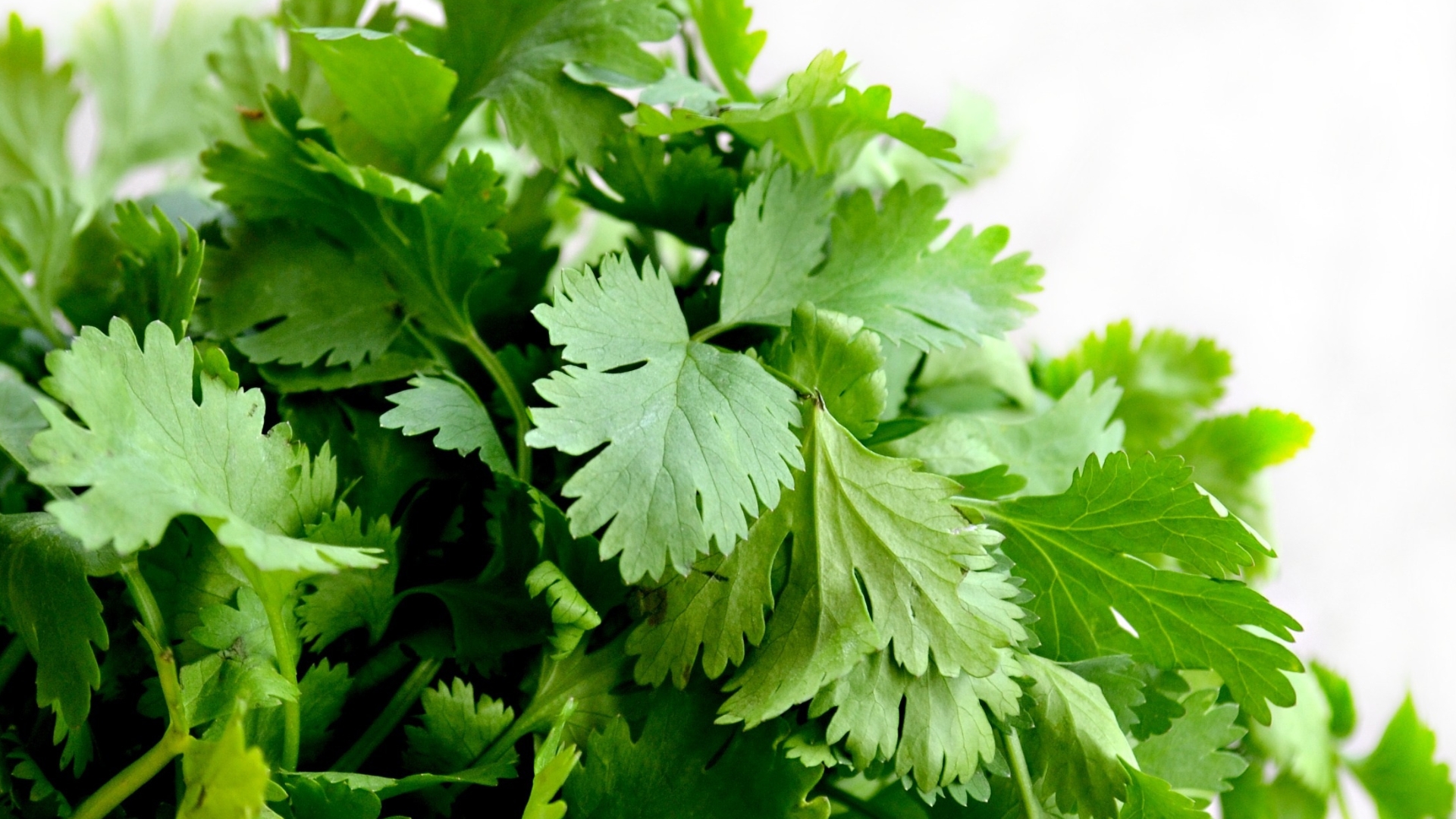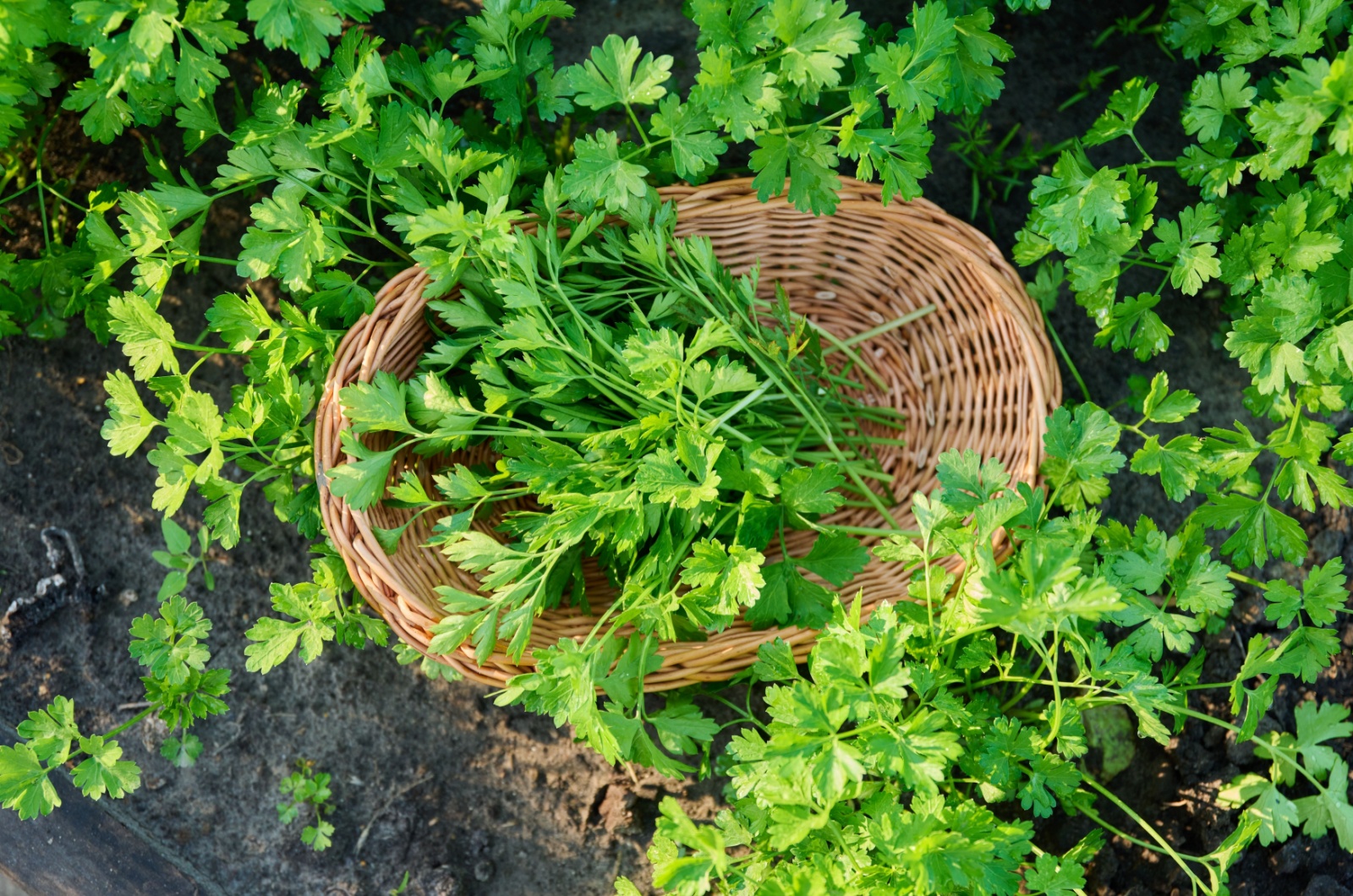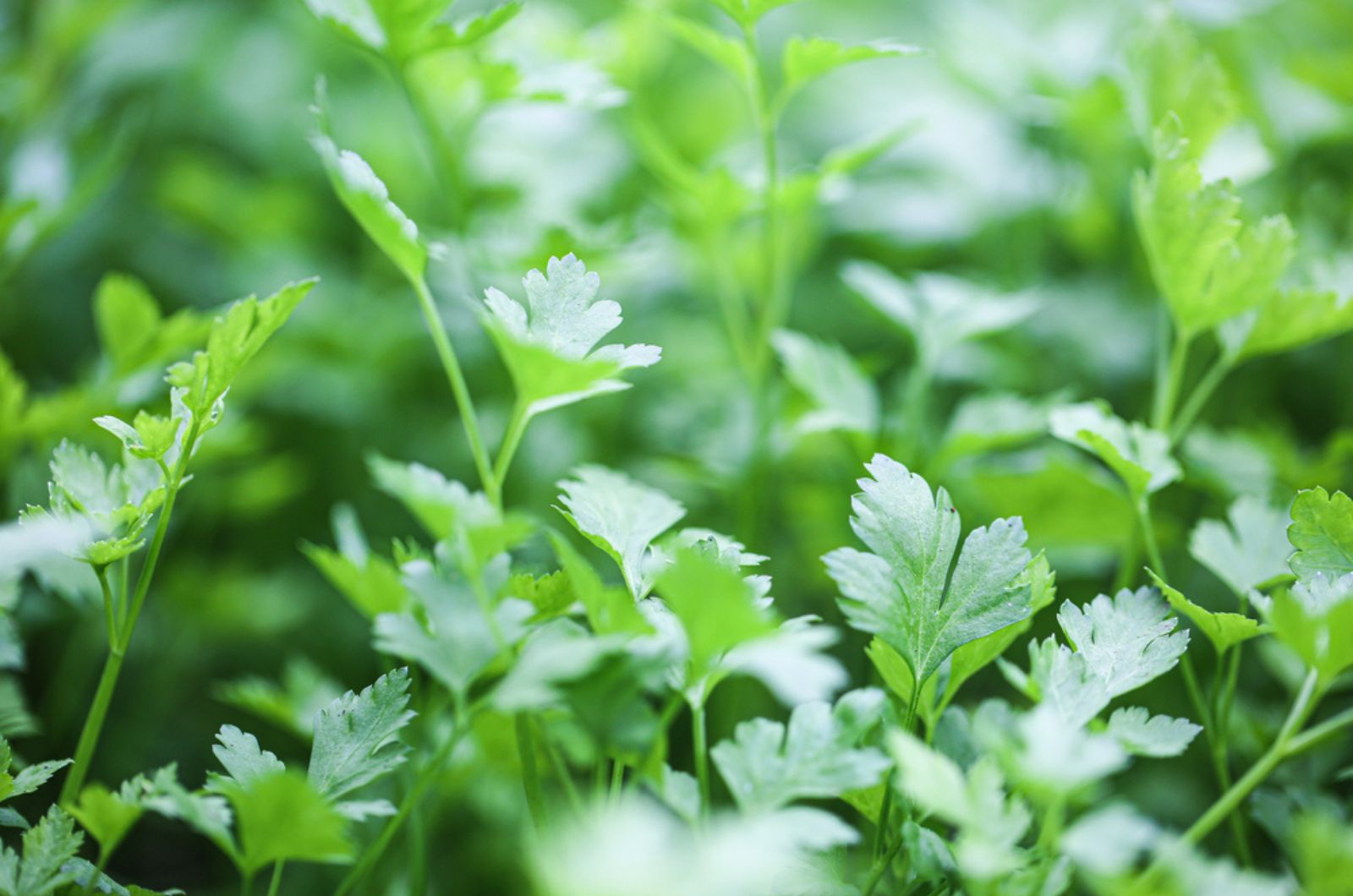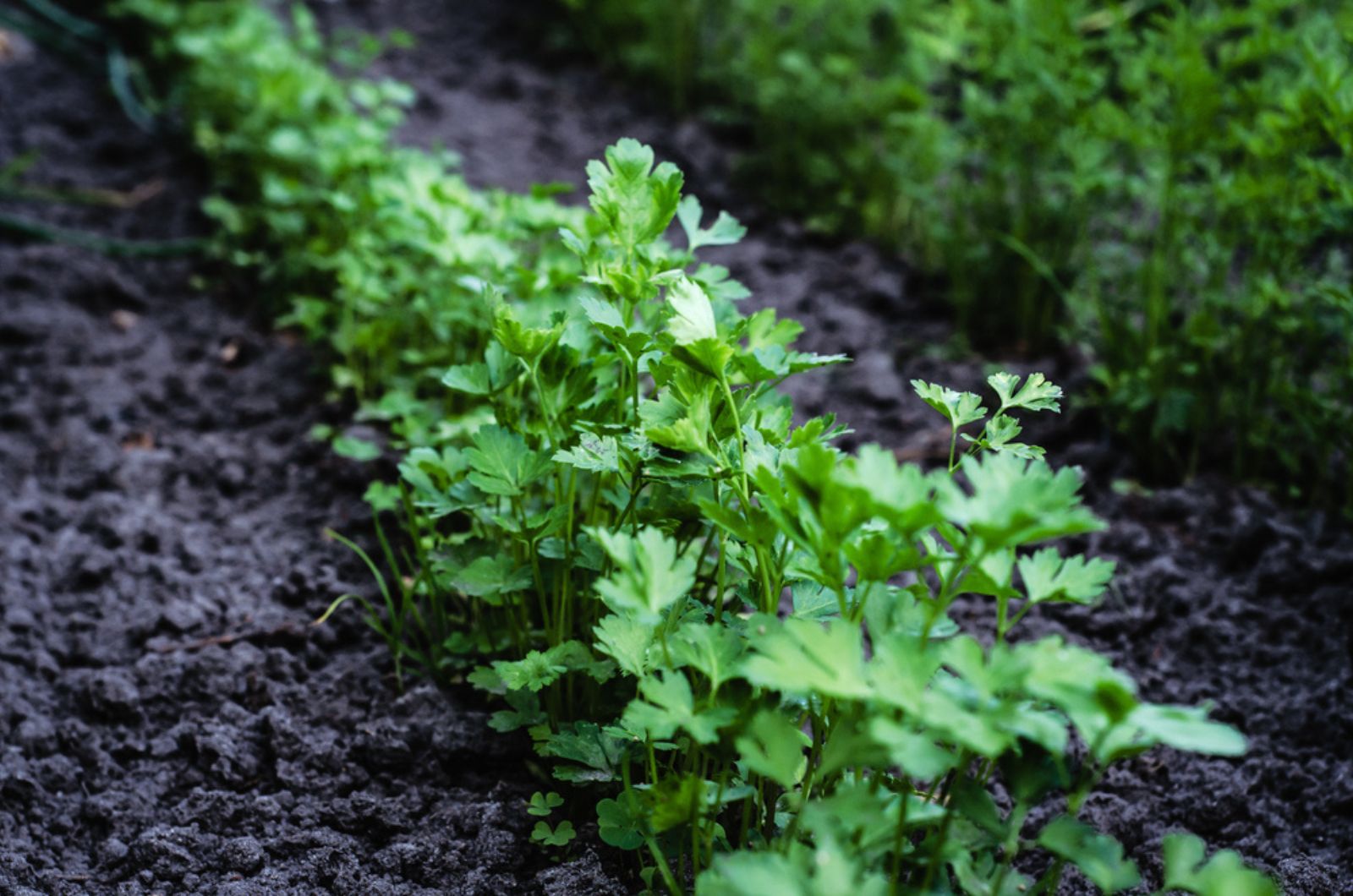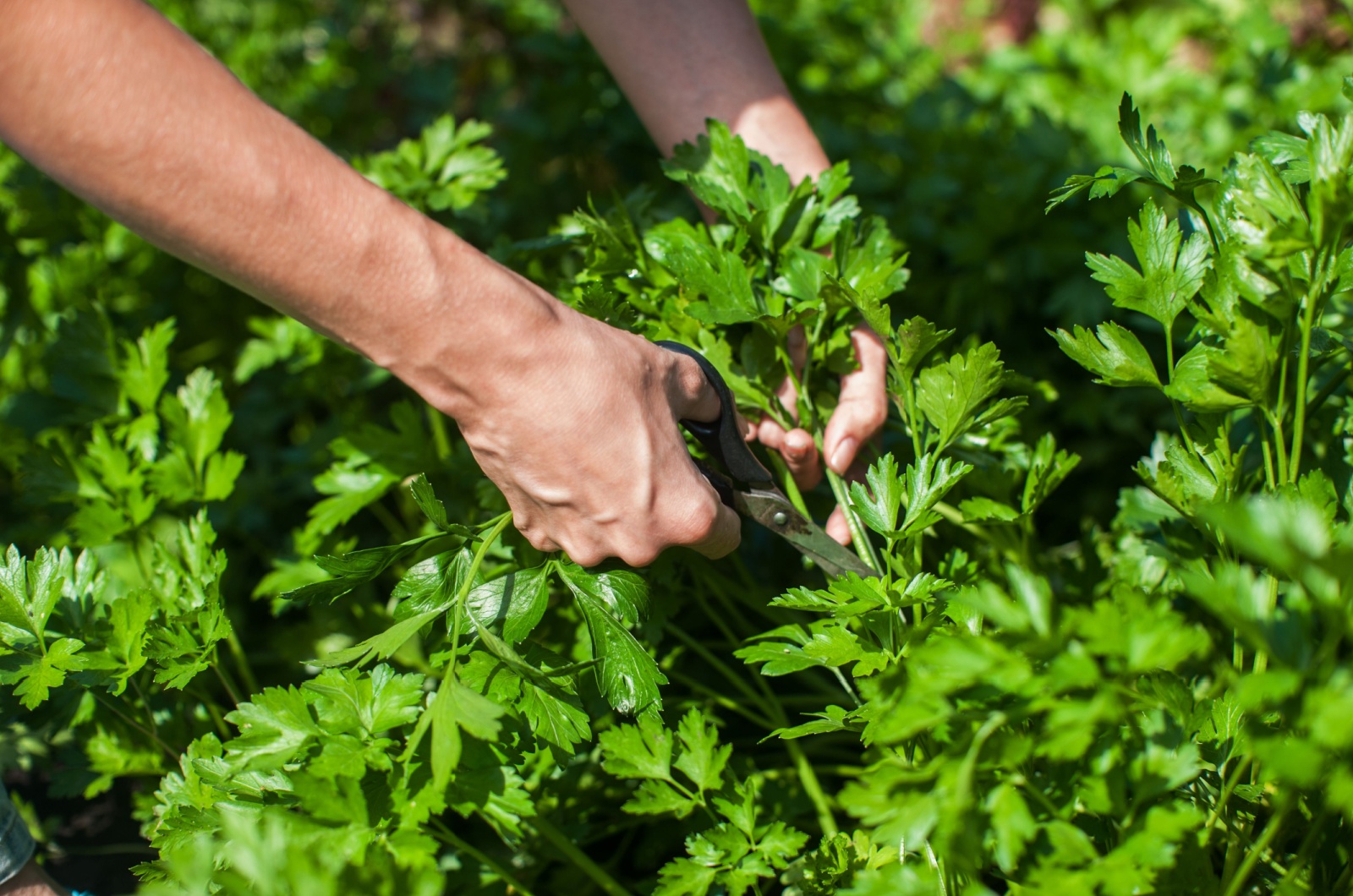Do you need to replant parsley every spring or will it simply grow on its own?
Beginner gardeners often mix up their annuals and perennials, sometimes ending up with no plants at all!
But don’t fret, we are here to help you!
In this article, we are going to talk more about parsley, a delicious herb that is super easy to grow. Get ready to discover if parsley is the perennial herb you’ve been looking for!
So, Is It An Annual Or Perennial?
The answer is: neither.
Although most gardeners grow parsley as an annual plant, it actually requires two years to complete its life cycle – we call these plants biennials.
So, you can plant the seeds in the spring and enjoy parsley until the cold temperatures arrive. But, if you don’t pull out the plant in the fall, its roots will survive during the winter and regrow again in the spring.
During its second year of growth, parsley will produce flowers and seeds before completely deteriorating. This plant won’t grow back again in the following spring.
Related: Discover The Wonders Of Winter Herb Gardening!
First-Year Parsley vs Second-Year Parsley
There’s a difference between first-year and second-year parsley. Although both are edible, you have to treat them differently to get the most out of them.
Let’s see what the actual deal is.
How To Grow First-Year Parsley
Parsley will take about 70 to 100 days to develop edible stems and leaves. Harvesting parsley should be done little by little, by simply cutting the stems off at the soil line. This way, you’ll have enough parsley for cooking but still maintain the plant’s growth.
As the end of the season approaches, you can harvest it more aggressively because the leaves will die back when the temperatures drop. Now, you can either pull out the plant and use it for composting, or you can leave the roots in the ground.
Remember, parsley roots can survive winter in USDA zones 3 and warmer, but you can also protect them by adding just a little bit of mulch above the soil line.
How To Grow Second-Year Parsley
If you keep parsley roots in the ground during winter, second-year parsley will emerge in the following spring. Some gardeners keep them so that they can harvest fresh parsley early in the spring, while some wait for the flowers and seeds.
By the end of spring, you’ll notice clusters of white flowers on your parsley plant. These delicate flowers will attract all sorts of pollinators and beneficial insects, which is why parsley is often used as a companion plant.
As time goes by, the flowers will leave behind lots of seeds and eventually die. You can leave them to self-sow or you can gather them and sow them in the following spring.
How To Plant Parsley
There would be no growth if you didn’t plant parsley successfully. For a more plentiful crop, parsley seeds can be sown every few weeks during the growth season, just like most other herbs. But, you can also plant it in the spring and grow it as a continuous crop.
If you plan to overwinter parsley, it’s best to overseed second-year parsley in spring with fresh seeds and wait for them to sprout. This way, you’ll have fresh parsley by the time the second-year one begins to bolt.
This might be useful: Don’t Let These 7 Herb-growing Mistakes Ruin Your Harvest
How To Grow Parsley All Year
Since parsley is relatively cold-tolerant, it can actually keep growing in areas with mild winters. Those who live in colder regions can simply grow parsley indoors. If you grow them in containers, bring them inside before the frost arrives.
On the other hand, you can grow herbs in pots and start your own indoor herb garden.
What you should do is select a 10-inch growing container with drainage holes and fill it with a potting mix. Lightly scatter the seeds and cover them with 1/2 an inch of soil. Then, water them well and put them in a sunny location.
Once two sets of true leaves have formed, you should thin out the seedlings and leave about an inch between each sprout. Enjoy fresh parsley throughout the winter and put it outdoors once the weather gets warmer.
Also read: 5 Tips To Help You Keep Potted Herbs Alive Indoors All Winter

